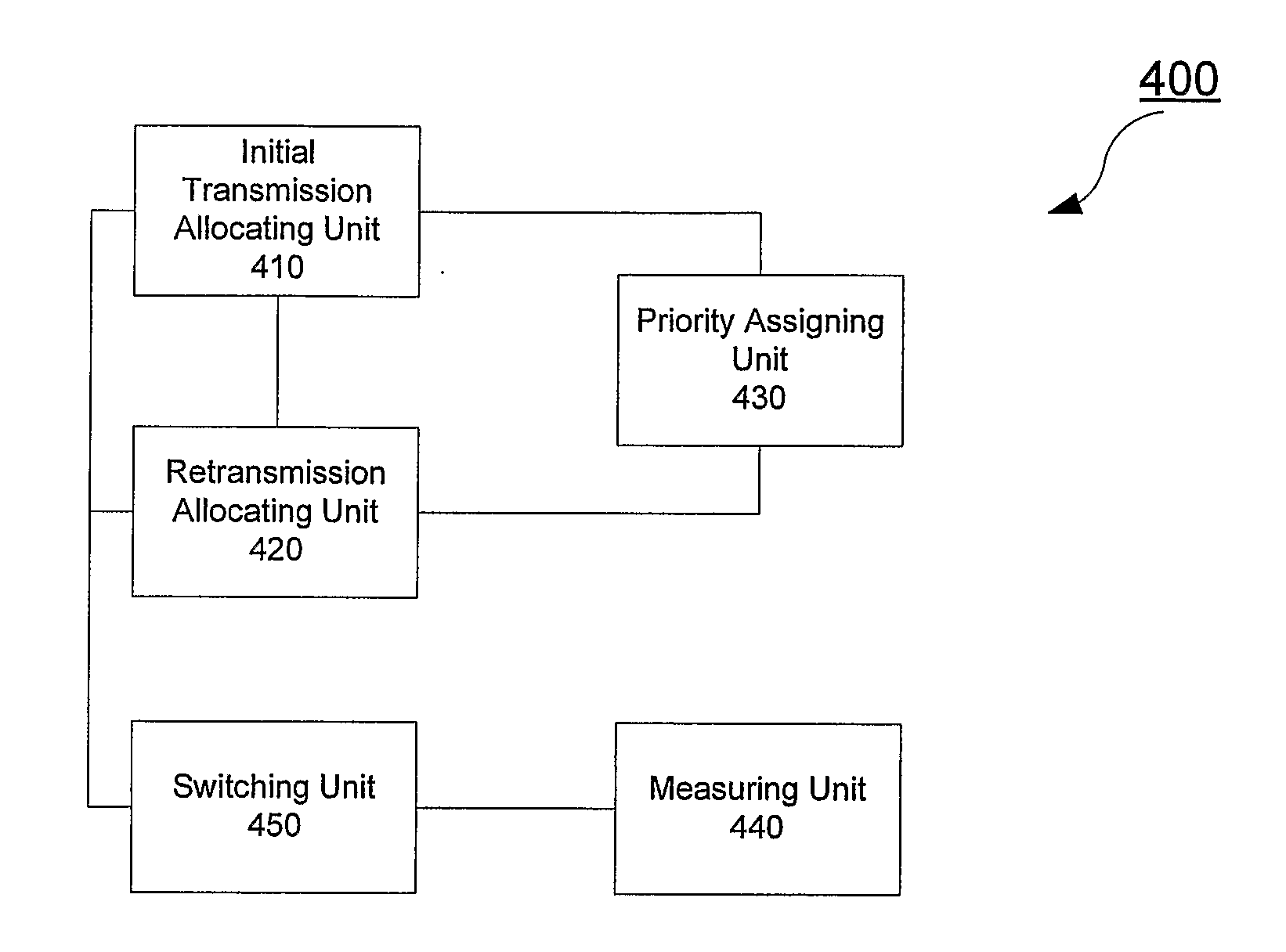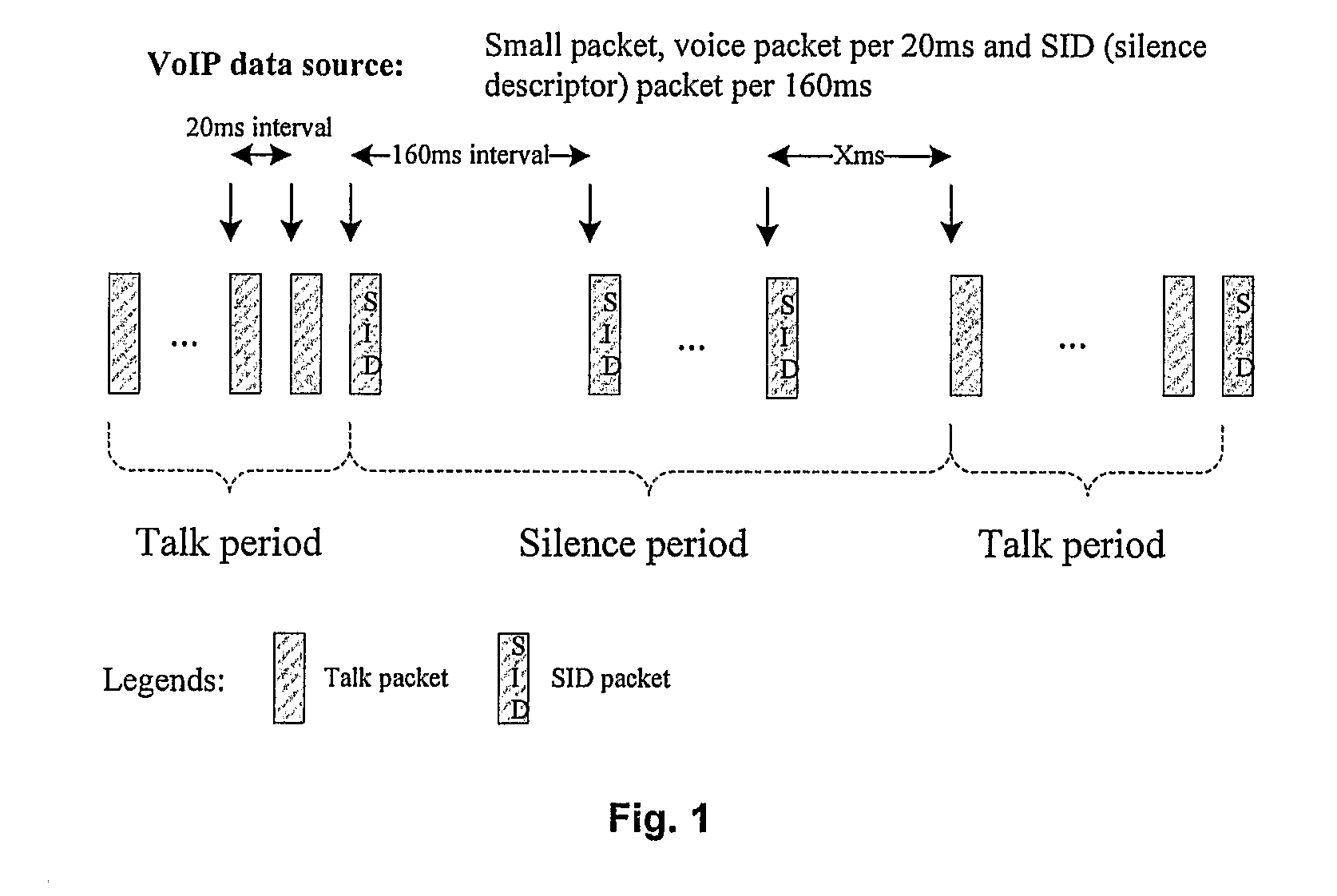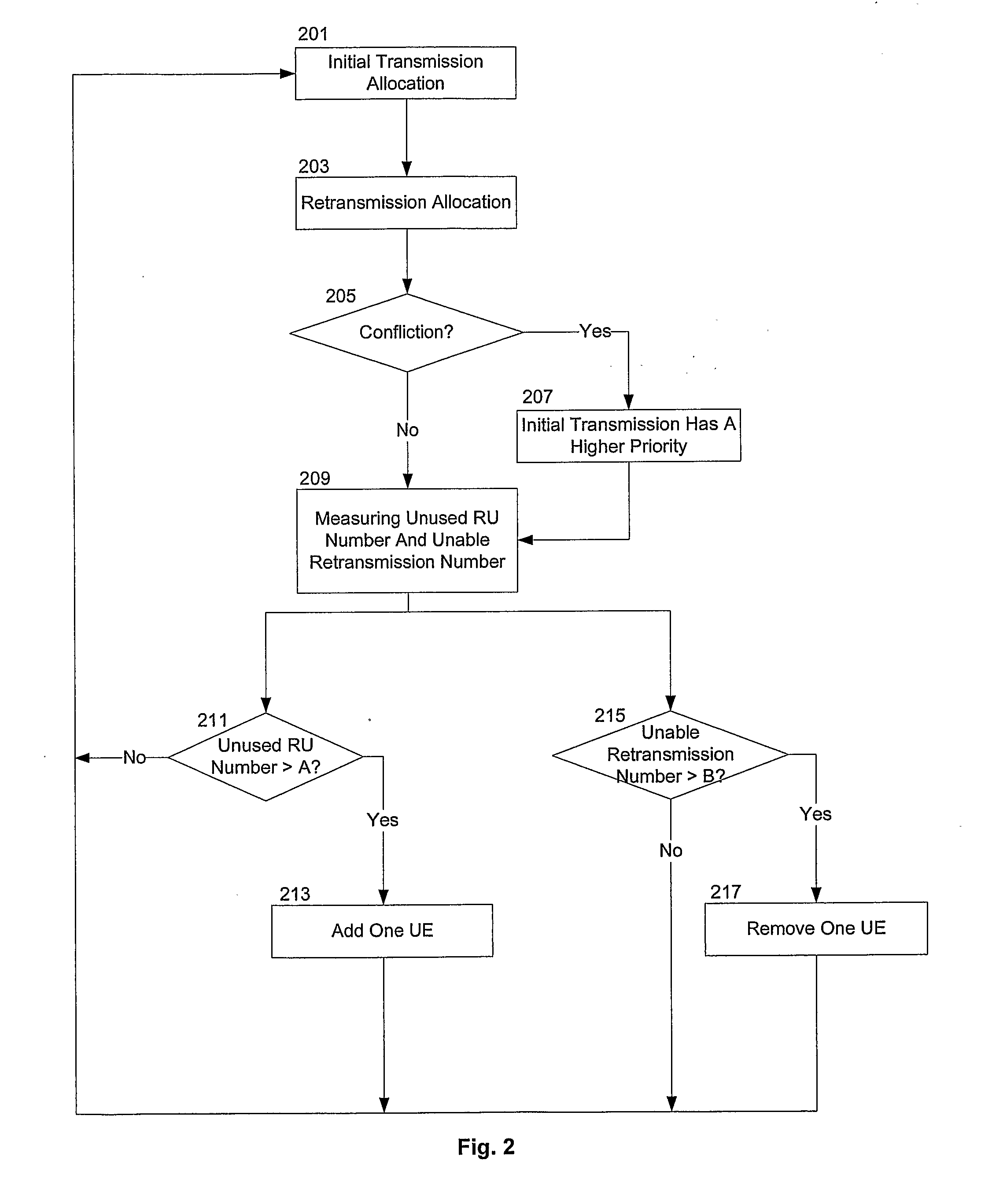Semi-persistent scheduling method and apparatus based on statistically multiplexing in time and frequency resources
a scheduling method and frequency resource technology, applied in the field of semi-persistent scheduling method, can solve problems such as system capacity, direct reduction of downlink (dl) capacity, and leveraging of unused harq transmission
- Summary
- Abstract
- Description
- Claims
- Application Information
AI Technical Summary
Benefits of technology
Problems solved by technology
Method used
Image
Examples
Embodiment Construction
[0052]Hereunder, the present invention will be described in accordance with the drawings. In the following description, some particular embodiments are used for the purpose of description only, which shall not be understood as any limitation to the present invention but the examples thereof. While it may blur the understanding of the present invention, the conventional structure or construction will be omitted.
1. VoIP Service Characteristics
[0053]For VoIP service, there are two states either talk state or silence state. In talk state, only one VoIP packet is transmitted every 20 ms; and in silence state, one SID (silence descriptor) packet is transmitted every 160 ms as shown in FIG. 1. In addition, the synchronous HARQ is supported for UL VoIP transmission.
2. Sharing HARQ Transmission Using TDM / FDM Method for Semi-Persistent Scheduling Mode
[0054]The semi-persistent scheduling is a preferred solution for LTE uplink VoIP scheduling due to its property of good trade-off between capaci...
PUM
 Login to View More
Login to View More Abstract
Description
Claims
Application Information
 Login to View More
Login to View More - R&D
- Intellectual Property
- Life Sciences
- Materials
- Tech Scout
- Unparalleled Data Quality
- Higher Quality Content
- 60% Fewer Hallucinations
Browse by: Latest US Patents, China's latest patents, Technical Efficacy Thesaurus, Application Domain, Technology Topic, Popular Technical Reports.
© 2025 PatSnap. All rights reserved.Legal|Privacy policy|Modern Slavery Act Transparency Statement|Sitemap|About US| Contact US: help@patsnap.com



